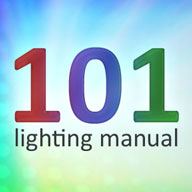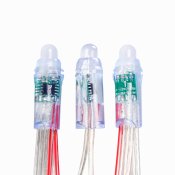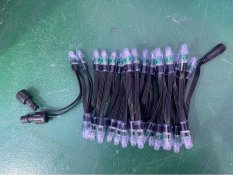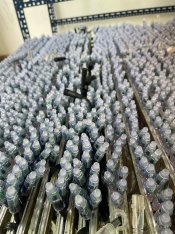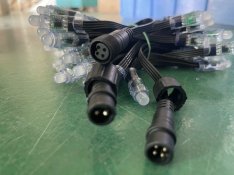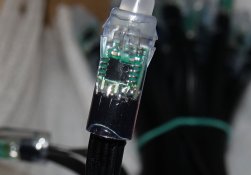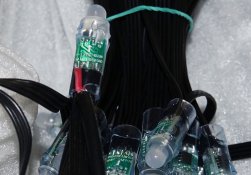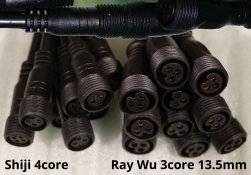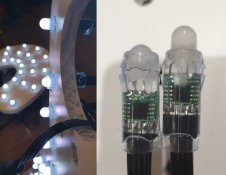'5 volt versus 12 volt, which one do I choose?'
How many times have you seen someone ask the above question? More than likely they are not sure whether to buy WS2811 5V or 12V RGB pixels. Well how about a third contender, GS8208 12V pixels? Not all 12V is the same, as it turns out! Spoiler: The power draw is lower, especially on white.
In 2021 I began investigating possibly increasing the amount of GS8208 in my display, alongside existing GS8208 IC 12V addressable RGB strip that was bought in 2018 for window/door outlines and leaping arches. After using this kind of addressable RGB strip for three seasons (now four) it is still working great. The GS is because this IC is from Genesis Systech instead of the currently more commonly known WorldSemi (e.g. the WS in WS2811). Unlike most other 12V IC strips, each 5050 LED is individually controllable. Other differences?
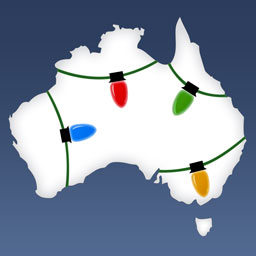
 auschristmaslighting.com
auschristmaslighting.com

 auschristmaslighting.com
auschristmaslighting.com

 auschristmaslighting.com
auschristmaslighting.com

 auschristmaslighting.com
auschristmaslighting.com
This message is split across multiple posts for easier referencing.
How many times have you seen someone ask the above question? More than likely they are not sure whether to buy WS2811 5V or 12V RGB pixels. Well how about a third contender, GS8208 12V pixels? Not all 12V is the same, as it turns out! Spoiler: The power draw is lower, especially on white.
In 2021 I began investigating possibly increasing the amount of GS8208 in my display, alongside existing GS8208 IC 12V addressable RGB strip that was bought in 2018 for window/door outlines and leaping arches. After using this kind of addressable RGB strip for three seasons (now four) it is still working great. The GS is because this IC is from Genesis Systech instead of the currently more commonly known WorldSemi (e.g. the WS in WS2811). Unlike most other 12V IC strips, each 5050 LED is individually controllable. Other differences?
- The R/G/B of each individual LED is wired in series instead of parallel.
- A built-in test mode when no data is present, just apply power (although one third-party site indicates there may be a newer/alternative IC revision with this test mode omitted).
- Automatic 12-bit gamma correction from 8-bit data for enhanced RGB colour mixing/blending abilities.
- A fourth wire that is used as a backup data line. Potentially helpful if you have a single pixel failure that would have otherwise prevented the data signal making it to any subsequent pixels further down the line. This should also work with multiple failures in a string, so long as the problem does not occur with consecutive pixels.

GS8208 LED Strip
There's new LED pixel strip out with GS8206 and GS8208 chipsets! So with just a datasheet and very limited info online about it, I ordered 75m of GS8208 and am hoping for the best. This thread will demo my findings with it. This GS stuff is made by Genesis Systech and is protocol-compatible...

New 12V smart pixels
hey guys, I found a new kind of pixel, and I do some test on it .It seems so interesting Traditional 5V/12V smart pixels 5V smart pixels aren’t a good idea because they are non-uniform brightness. They can’t travel longer distance without further power requirements. Therefore, a 12V +...

Answering questions about GS8208
I see some questions from Alan ,and i find out the answer 1. If you lose 1 led out of the RGB does the pixel go dark with no colours shown or does it just show the other 2 colours. Once the pixel show with the dead-colour, the the pixel will go dark with no colours shown . For example, if R is...

GS8208
GS8208 is an 8-bit LED Driver IC for RGB Pixels from Genesis Systech. The IC is integrated into the 5050 LED. It incorporates gamma correction giving an effective colour depth of 12 bits for enhanced colour blending, particularly with dimmer colours.
This message is split across multiple posts for easier referencing.
Last edited:

